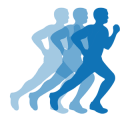Osteitis pubis, also referred to as pubic bone stress injury, causes groin pain originating from the front of the pelvis at the pubic bones. The pain typically develops gradually and is often experienced during activities like running or performing sit-ups.
Osteitis pubis symptoms
- Osteitis pubis symptoms typically manifest as groin or pelvic pain during running, sit-ups, or squats.
- The pain usually develops gradually, often confused with muscle or groin strain.
- In extreme cases, it may lead to a waddling gait.
- An X-ray may reveal an irregular pubic symphysis, indicating potential bone thickening and inflammation.
Osteitis pubis explained
Pubic Bone Stress Injury, previously known as Osteitis Pubis, was misidentified as inflammation of the pubic joint. However, recent studies have disproven this due to the absence of inflammation. This condition primarily results from overuse or direct impact and is characterized by significant pain in the central part of the front groin.
Although uncommon, this condition can cause enduring groin pain and is frequently seen in soccer, hockey, and pregnancy. It is not limited to these instances, as it can also occur in activities involving heavy load bearing, such as carrying hefty bags uphill.
Treatment of osteitis pubis
What can the athlete do?
Athletes suspecting osteitis pubis should consult a specialist for diagnosis and to exclude the possibility of a hernia. The main treatment for this condition is rest, ranging from a few days to three months depending on the severity. For effective rehabilitation, seek advice from a sports injury professional.
What can a sports injury specialist do?
Consult a doctor for possible prescriptions, including anti-inflammatory drugs like ibuprofen and potentially a corticosteroid injection. They will also determine the required rest duration based on injury severity and prescribe a rehabilitation program.
Rehabilitation of pubic bone stress injury
Initial Stage Management:
Rest, apply cold therapy, and use prescribed anti-inflammatory medication.
Mid-Stage Rehabilitation:
Engage in pain-free adductor stretching five times daily.
Advanced Stage Exercises:
If pain-free, carry out stomach crunches, dorsal raises, and exercises for adductors, abductors, and hip flexors, performing three sets of ten daily.
Resumption of Sports Activities:
Gradually resume sports-specific training. If uncertain, consult a sports injury specialist as recovery may span several months.
